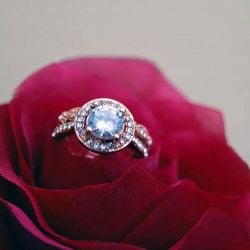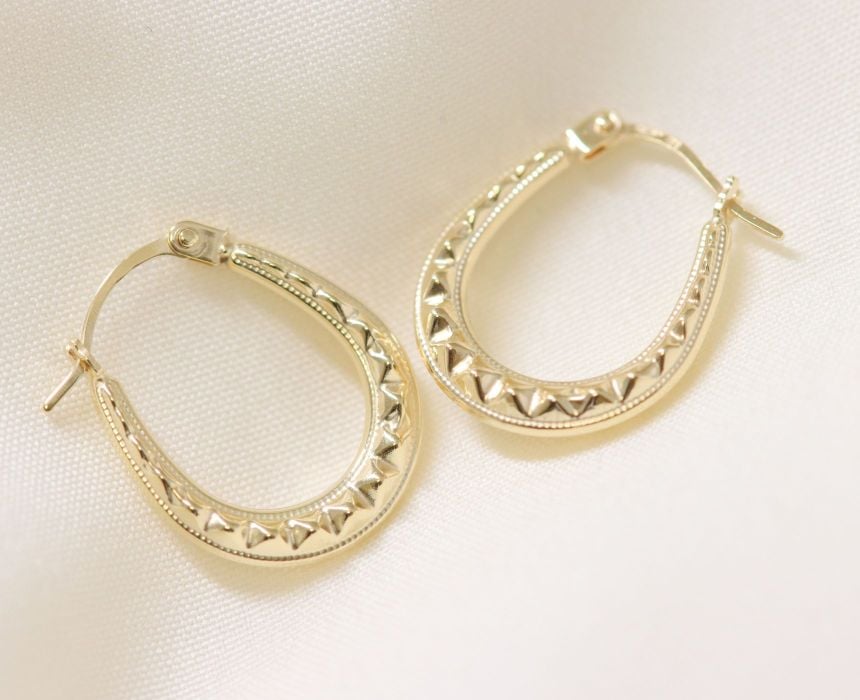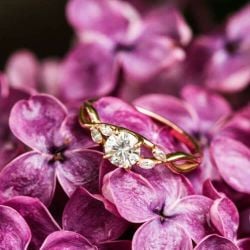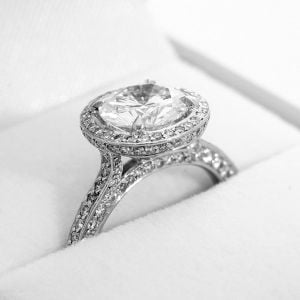- ‹Home
- ‹
- /
- Jewellery & Watch Guides
- /
- The Rolex Day-Date Guide

The Rolex Day-Date Buying Guide
The Rolex Day-Date is a classic timepiece that has been a staple in the world of luxury watches for over 70 years. The Rolex Day-Date Collection, also known as the "Presidents' Watch", is one of the world's most recognisable and prestigious luxury watches. This comprehensive guide will delve into the history of Rolex's flagship model, the Day-Date's movement evolution, the origin of the “President’s” Watch, and the various case, bracelet, and dial options available.Rolex Day-Date Watches

Timeline of the Rolex Day-Date
The Rolex Datejust was first introduced in 1945, making it one of the first wristwatches to feature an automatic winding mechanism and a date function. The Rolex Datejust was designed to commemorate the 40th anniversary of Rolex, and it quickly became one of the most popular luxury watches in the world. In 1956, Rolex introduced the Day-Date collection, which was the first wristwatch to display the day of the week written in full on the dial. Adding to the date aperture and iconic Cyclops lens of the Datejust at 3 o'clock, the Day-Date also displayed the day of the week at noon. The Day-Date was designed to be the ultimate luxury watch, and it quickly became the watch of choice for world leaders and prominent figures.
Here's a brief overview of how the Rolex Day-Date developed and evolved:
1945 – Rolex introduces the Datejust, one of the first wristwatches to feature an automatic winding mechanism and a date function.
1956 – Rolex introduces the Day-Date collection, the first wristwatch to display the day of the week written in full on the dial. The Day-Date is designed to be the ultimate luxury watch.
1966 – President Lyndon Johnson of the United States was seen wearing a Rolex Day-Date while performing his presidential duties. This led Rolex to release an advertisement for the Day-Date collection, titled "The Presidents' Watch", which featured a picture of President Johnson wearing his yellow gold Rolex.
1977 – Rolex introduces the Calibre 3055 movement, which debuted the 'quickset' feature which allowed the date to be set independently of the time. The Calibre 3055 was only produced for the Day-Date.
1988 – Rolex introduces the Calibre 3155 movement, which features a longer power reserve and improved shock resistance. This also introduced the double quickset feature which allowed both the date and day to be corrected independently from the time.
2000 – Rolex introduces the newest version of the Day-Date 36 with the six-digit 118xxx references.
2008 – In a surprise move, Rolex introduces the Day-Date II featuring a much larger 41mm case size.
2015 – Only lasting seven years, the Day-Date II was replaced by the Day-Date 40 featuring a 40mm Oyster case along with a new generation movement, the Calibre 3255, featuring a 72-hour power reserve.
2019 – Rolex updates its signature 36mm Day-Date – the only Day-Date case available until 2008 – with the new Calibre 3255.
1945 – Rolex introduces the Datejust, one of the first wristwatches to feature an automatic winding mechanism and a date function.
1956 – Rolex introduces the Day-Date collection, the first wristwatch to display the day of the week written in full on the dial. The Day-Date is designed to be the ultimate luxury watch.
1966 – President Lyndon Johnson of the United States was seen wearing a Rolex Day-Date while performing his presidential duties. This led Rolex to release an advertisement for the Day-Date collection, titled "The Presidents' Watch", which featured a picture of President Johnson wearing his yellow gold Rolex.
1977 – Rolex introduces the Calibre 3055 movement, which debuted the 'quickset' feature which allowed the date to be set independently of the time. The Calibre 3055 was only produced for the Day-Date.
1988 – Rolex introduces the Calibre 3155 movement, which features a longer power reserve and improved shock resistance. This also introduced the double quickset feature which allowed both the date and day to be corrected independently from the time.
2000 – Rolex introduces the newest version of the Day-Date 36 with the six-digit 118xxx references.
2008 – In a surprise move, Rolex introduces the Day-Date II featuring a much larger 41mm case size.
2015 – Only lasting seven years, the Day-Date II was replaced by the Day-Date 40 featuring a 40mm Oyster case along with a new generation movement, the Calibre 3255, featuring a 72-hour power reserve.
2019 – Rolex updates its signature 36mm Day-Date – the only Day-Date case available until 2008 – with the new Calibre 3255.
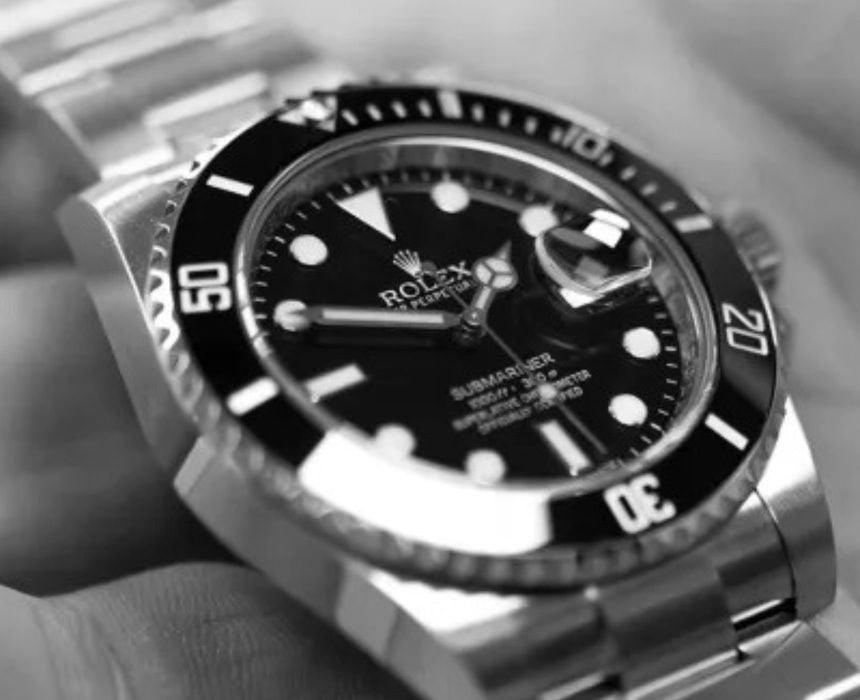
Why is the Day-Date known as the 'President's Watch'?
The Rolex Day-Date is often referred to as the "President's Watch," and for good reason. This luxury timepiece has a long history of being worn by some of the most powerful people in the world. From U.S. Presidents to heads of state and business leaders, the Rolex Day-Date has been a symbol of success, elegance, and sophistication for over six decades.The origins of the "President's Watch" title can be traced back to 1966 when U.S. President Lyndon B. Johnson was seen wearing a Rolex Day-Date with the 'President' bracelet – the semi-circular, three-piece link bracelet. This led Rolex to release an advertisement for the Day-Date collection, titled "The Presidents' Watch," which featured a picture of President Johnson wearing his yellow gold Rolex. Since then, the Rolex Day-Date has become synonymous with presidential power and influence and has been worn by numerous U.S. Presidents, including JFK, Richard Nixon, Gerald Ford, and Ronald Reagan.
However, LBJ was not the first President to wear the Day-Date. Rolex offered their 150,000th Officially Certified Chronometer to World War II hero and mastermind of the D-Day landings, General Dwight D. Eisenhower. Eisenhower, winning the 1952 presidential race, sported his Rolex Day-Date during his inauguration in 1953. However, the watch in question featured the Jubilee bracelet, a five-link X-patterned bracelet, not the President bracelet perhaps explaining why the Day-Date adopted the nickname the Presidential watch and not the General's watch.
John F. Kennedy received a Rolex Day-Date as a gift presented to him by none other than Marilyn Monroe after her birthday serenade for his 45th Birthday at Madison Square Garden. The watch, inscribed with 'Jack with love as always from Marilyn May 29th, 1962', was later sold at auction in 2005 for $120,000.
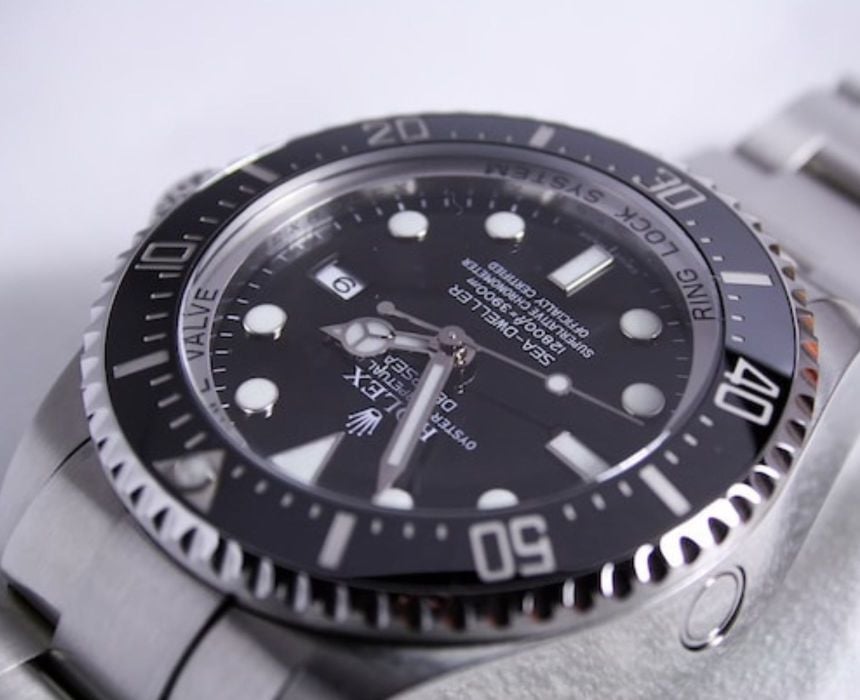
Key Features of the Generations of the Rolex Day-Date
The Rolex Day-Date is one of the brand's most iconic collections and has undergone several updates and changes over the years. Here's a brief history of the different reference numbers and their key features:Rolex Day-Date ref. 65xx (1956):
Over a decade after the launch of the Rolex Datejust and the introduction of the date aperture to the dial, Rolex went a step further and added the day of the week at 12 o'clock for the ref.65xx. The very first Rolex Day-Date references, the ref. 6510 and 6511 launched in 1956, looked very similar to the Datejust with fluted bezels and a 36mm case. The key difference beyond the addition of the day was the President bracelet and its semi-circular links. The day wheel was originally produced in 11 different languages but given its global success, it's now available in 26. This was the first generation of the Rolex Day-Date and introduced the iconic watch to the world.
Rolex Day-Date ref. 180x (Late 1950s – Late 1970s):
In 1959, Rolex introduced the ref. 180x series powered by Rolex's Calibre 1555 movement with a frequency of 18,000 beats per hour. The case size was 36mm and it was available with a range of dial colours and indices. The 180x references are largely distinguished based on their decoration: 1802 a smooth bezel, 1803 a fluted bezel, 1804 a diamond-set bezel, 1806 'Florentine' decoration (fine, textured etchings), and 1807 Bark decoration. The ref. 1803 is arguably the most famous of the series available in yellow gold, white gold and rose gold, including a 'pie-pan' style dial - where the dial features a concave centre with a slightly raised perimeter for a distinctively curved appearance.
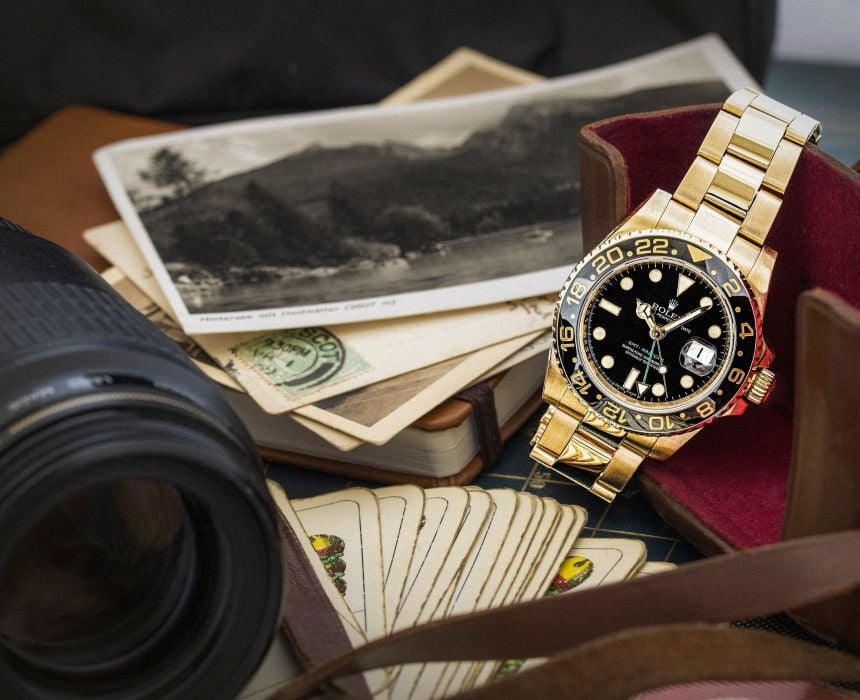
Rolex Day-Date ref. 180xx (Late 1970s – Late 1980s):
The '5-digit Day-Dates' looked aesthetically very similar to the previous generation. However, what saw significant change was the movement with ref. 180xx models now featuring the Calibre 3055. As noted above, this meant that the date could be adjusted independently of time. This meant that, unlike with previous references, if the watch was set to the 10th but was actually the 15th, you would no longer need to rotate the crown for a full five cycles to set the watch to the correct date. Furthermore, the acrylic crystal was replaced in favour of the hardier and more refined sapphire crystal.
Rolex Oysterquartz Day-Date (Late 1970s – Early 2000s):
In 1977, Rolex introduced the Oysterquartz Day-Date, which was powered by a quartz movement instead of a mechanical one. As a result, don't be alarmed that this Rolex ticks. Usually, a telltale sign of a fake Rolex is the lack of a smooth seconds hand movement, the Rolex Oysterquartz ticks by design as a result of the quartz movement. This was in response to the ongoing 'quartz crisis' of the seventies and eighties where many traditional Swiss watchmakers struggled to compete with the introduction of the highly accurate but lower production-cost quartz watches. Even the mighty Rolex was not immune to such pressures and so introduced the Oysterquartz which combined quartz accuracy with the prestige of mechanical watchmaking.
Apart from the Oysterquartz notation on the dial and quartz Calibre 5035, the only other noticeable difference between the Oysterquartz and previous references was that despite having the same sized 36mm Oyster case, it wore slightly larger on the wrist due to its more angular shape to house the new movement.
The '5-digit Day-Dates' looked aesthetically very similar to the previous generation. However, what saw significant change was the movement with ref. 180xx models now featuring the Calibre 3055. As noted above, this meant that the date could be adjusted independently of time. This meant that, unlike with previous references, if the watch was set to the 10th but was actually the 15th, you would no longer need to rotate the crown for a full five cycles to set the watch to the correct date. Furthermore, the acrylic crystal was replaced in favour of the hardier and more refined sapphire crystal.
Rolex Oysterquartz Day-Date (Late 1970s – Early 2000s):
In 1977, Rolex introduced the Oysterquartz Day-Date, which was powered by a quartz movement instead of a mechanical one. As a result, don't be alarmed that this Rolex ticks. Usually, a telltale sign of a fake Rolex is the lack of a smooth seconds hand movement, the Rolex Oysterquartz ticks by design as a result of the quartz movement. This was in response to the ongoing 'quartz crisis' of the seventies and eighties where many traditional Swiss watchmakers struggled to compete with the introduction of the highly accurate but lower production-cost quartz watches. Even the mighty Rolex was not immune to such pressures and so introduced the Oysterquartz which combined quartz accuracy with the prestige of mechanical watchmaking.
Apart from the Oysterquartz notation on the dial and quartz Calibre 5035, the only other noticeable difference between the Oysterquartz and previous references was that despite having the same sized 36mm Oyster case, it wore slightly larger on the wrist due to its more angular shape to house the new movement.
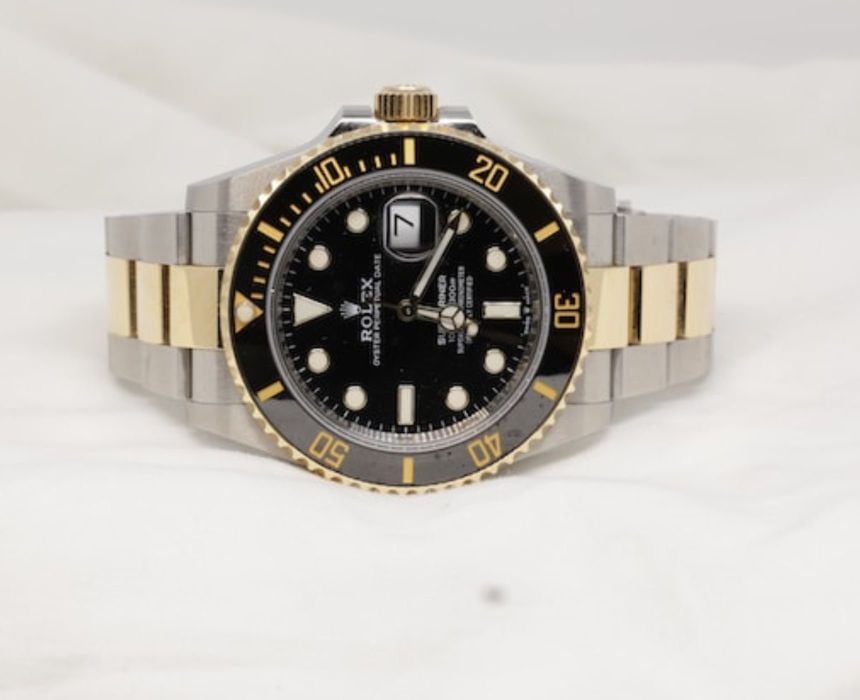
Rolex Day-Date ref. 182xx & 183xx (Late 1980s – Late 1990s):
In 1988, Rolex introduced the new Calibre 3155 to the ref. 182xx and 183xx. The Calibre 3155 introduced the double quickset feature – so-called because you could now adjust both the date and the day, whereas the single quickset only adjusted the date, independently of the hour hands, hence you didn't have to continuously rotate the crown.
The difference between the 182xx and 183xx? The latter includes diamonds! The 183xx came available with a diamond set in the case, bezel and indices and even diamond-set presidential bracelets.
Rolex Day-Date ref. 118xxx (2000 – Present):
In 2000, Rolex released the six-digit Day-Date generation, equipped with the same 36mm Oyster case and Calibre 3155 movement. Whilst the internal workings of the watch were largely the same, the six-digit references did feature upgraded bracelets and clasps. What changed was the plethora of dial, bezel and metallic case options. Available in yellow gold, white gold, Everose and platinum with fluted or smooth bezels, a variety of dial colours and even leather straps – a significant divergence from the traditional President bracelet – the 118xxx references were truly diverse.
Rolex Day-Date II (2008 – 2015):
The Rolex Day-Date II was introduced in 2008 and was a larger version of the classic Day-Date. This model was available in 41mm, as opposed to the traditional 36mm size, and was popular among those who preferred a larger watch with Rolex looking to capitalise on the big watch trend. The Day-Date II featured the new Calibre 3156 featuring a 48-hour power reserve. During its seven-year lifespan, the Day-Date II was available in yellow gold (ref. 218238), pink gold (ref. 218235), white gold (ref. 218239), and platinum (ref. 218206).
Rolex Day-Date 40 (2015 – Present):
For those who thought that the 5mm case size increase of the Day-Date II was slightly too radical, in 2015, Rolex introduced the Day-Date 40, with yes you guessed it, a 40mm case size. For many, the subtle change in size makes all the difference. Whereas the Day-Date II was sporty for some but clunky for others, the Day-Date 40 offered a compromise which offers the perfect balance between rugged and refined.
In 1988, Rolex introduced the new Calibre 3155 to the ref. 182xx and 183xx. The Calibre 3155 introduced the double quickset feature – so-called because you could now adjust both the date and the day, whereas the single quickset only adjusted the date, independently of the hour hands, hence you didn't have to continuously rotate the crown.
The difference between the 182xx and 183xx? The latter includes diamonds! The 183xx came available with a diamond set in the case, bezel and indices and even diamond-set presidential bracelets.
Rolex Day-Date ref. 118xxx (2000 – Present):
In 2000, Rolex released the six-digit Day-Date generation, equipped with the same 36mm Oyster case and Calibre 3155 movement. Whilst the internal workings of the watch were largely the same, the six-digit references did feature upgraded bracelets and clasps. What changed was the plethora of dial, bezel and metallic case options. Available in yellow gold, white gold, Everose and platinum with fluted or smooth bezels, a variety of dial colours and even leather straps – a significant divergence from the traditional President bracelet – the 118xxx references were truly diverse.
Rolex Day-Date II (2008 – 2015):
The Rolex Day-Date II was introduced in 2008 and was a larger version of the classic Day-Date. This model was available in 41mm, as opposed to the traditional 36mm size, and was popular among those who preferred a larger watch with Rolex looking to capitalise on the big watch trend. The Day-Date II featured the new Calibre 3156 featuring a 48-hour power reserve. During its seven-year lifespan, the Day-Date II was available in yellow gold (ref. 218238), pink gold (ref. 218235), white gold (ref. 218239), and platinum (ref. 218206).
Rolex Day-Date 40 (2015 – Present):
For those who thought that the 5mm case size increase of the Day-Date II was slightly too radical, in 2015, Rolex introduced the Day-Date 40, with yes you guessed it, a 40mm case size. For many, the subtle change in size makes all the difference. Whereas the Day-Date II was sporty for some but clunky for others, the Day-Date 40 offered a compromise which offers the perfect balance between rugged and refined.

Buying Preowned Versus Buying New
Whilst it is fair to say that Rolex Day-Dates do hold their value in the long-term, a new Rolex depreciates significantly as soon as it is placed on your wrist. Bought new, a standard Rolex Day-Date will set you back around £30,000. With references that are still in production, the depreciation isn't too severe as the watch still features the latest Rolex technology. However, as soon as Rolex release an updated reference, its value will quickly plummet as it is no longer perceived as the latest and greatest. In response to the latest reference, you'll quickly find your Rolex Day-Date has roughly halved in value – assuming it's not a particularly rare or one-of-a-kind model.This all assumes that you can get your hands on a brand-new Day-Date. With Rolex being notorious for its limited production, new models are reserved for existing clientele who are favoured by Rolex. You cannot simply walk into a Rolex dealership and walk out with a new Day-Date; it takes years of consistent custom for you to be deemed a worthy recipient.
Resultingly, used Rolex markets offer two considerable benefits. The first is immediate access. The second is the cost. Not only are second-hand Day-Date watches cheaper compared to buying new, but you stand to gain more from an investment perspective as i) the immediate depreciation decrease has already been absorbed by the original purchaser and ii) pre-owned Rolexes have continued to increase in value given the increasing rarity of new models. If you are simply after the prestige and satisfaction of owning a historic and apex artefact, rather than the excitement and bragging rights of a new model, then buying a pre-owned Rolex Day-Date is a sensible option.
The Day-Date collection is one of the world's most iconic and prestigious luxury watches. From its history and movement evolution to its case, bracelet, and dial options, the Rolex Day-Date is a timepiece that embodies the values of precision, luxury, and style. Whether you are a collector, a watch enthusiast, or simply someone who appreciates the finer things in life, the Rolex Day-Date is a watch that is sure to impress.





